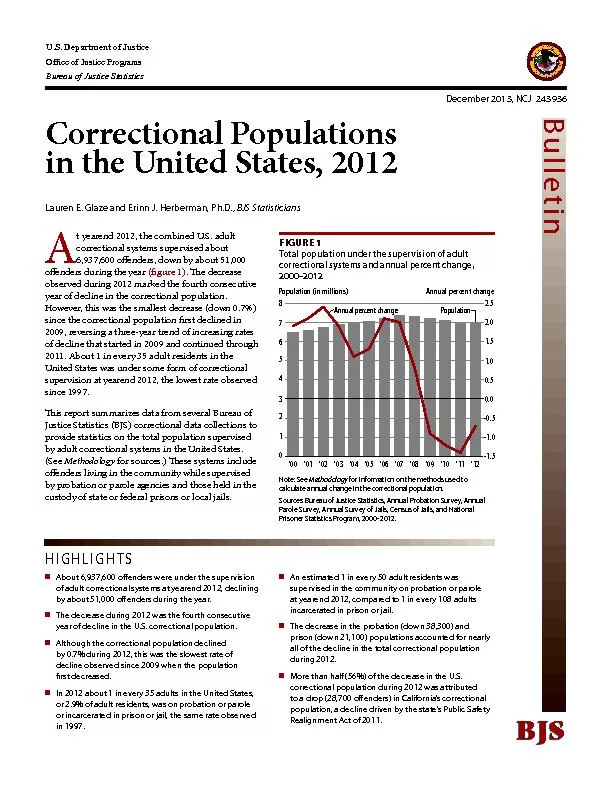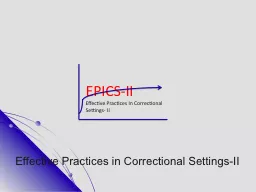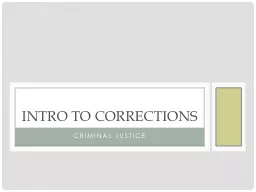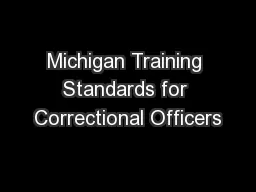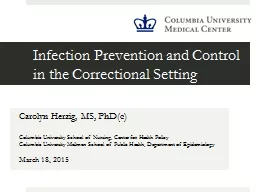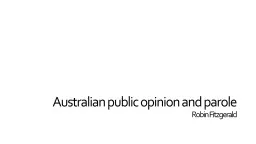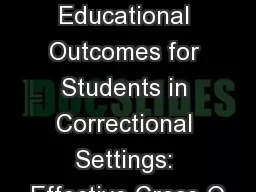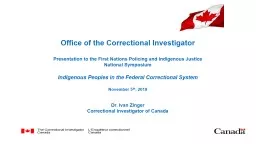PDF-CORRECTIONAL POPULATIONS IN THE UNITED STATES, 2012
Author : tatiana-dople | Published Date : 2016-11-08
DECEMBER 2013 By yearend 2012 the rate of oenders under correctional supervision dropped below the 2000 level About 2870 oenders per 100000 US adult residents or
Presentation Embed Code
Download Presentation
Download Presentation The PPT/PDF document "CORRECTIONAL POPULATIONS IN THE UNITED S..." is the property of its rightful owner. Permission is granted to download and print the materials on this website for personal, non-commercial use only, and to display it on your personal computer provided you do not modify the materials and that you retain all copyright notices contained in the materials. By downloading content from our website, you accept the terms of this agreement.
CORRECTIONAL POPULATIONS IN THE UNITED STATES, 2012: Transcript
Download Rules Of Document
"CORRECTIONAL POPULATIONS IN THE UNITED STATES, 2012"The content belongs to its owner. You may download and print it for personal use, without modification, and keep all copyright notices. By downloading, you agree to these terms.
Related Documents

